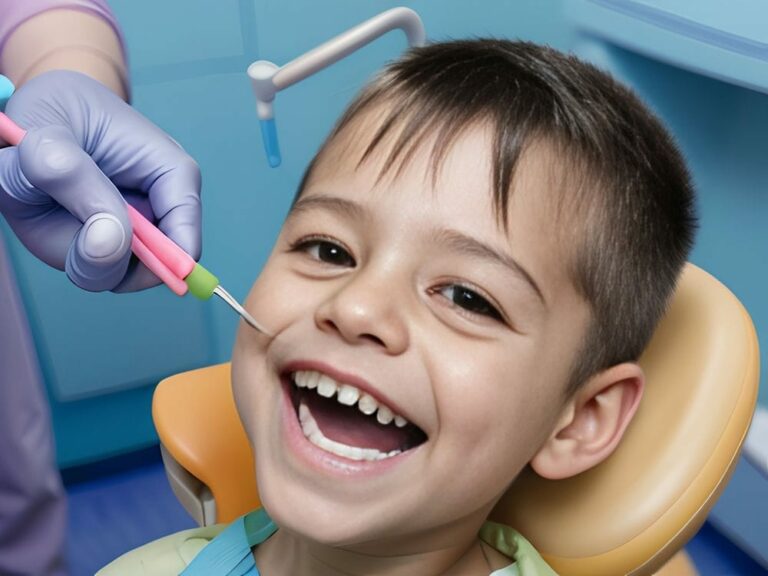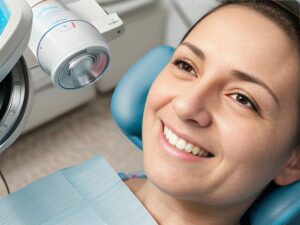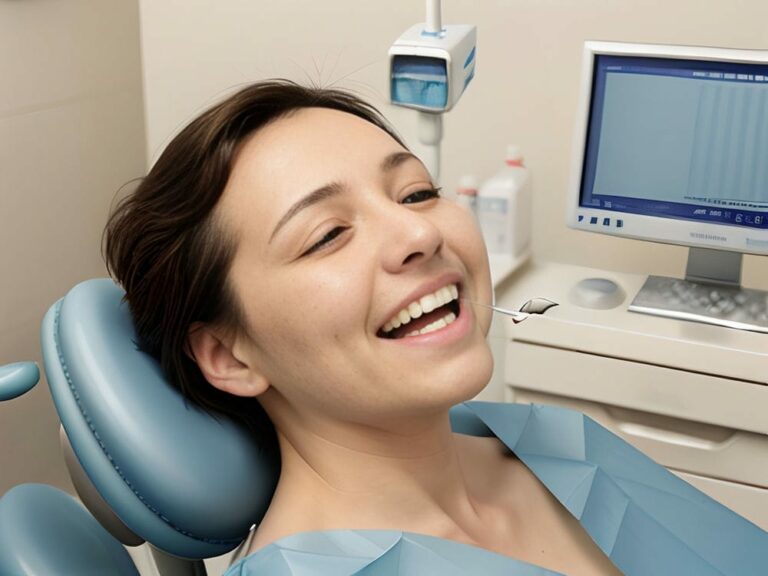The Evolution of Dental Treatment Planning: From Traditional Methods to Digital Dentistry
The field of dental treatment planning has come a long way, with advancements in technology revolutionizing the way dentists approach their practice. Traditional methods involved manual measurements, impressions, and handcrafted prosthetics. However, the emergence of digital dentistry has opened up a whole new world of possibilities, allowing for more precise and efficient treatment planning.
One major breakthrough in dental treatment planning is the use of 3D printing technology. With 3D printers, dentists can now create highly accurate and detailed models of a patient’s teeth and gums. This allows them to better visualize and plan out the treatment process, whether it be for dental prosthetics like crowns or bridges, or for more complex procedures such as implantology.
Another advantage of digital dentistry is the ability to customize treatments according to each individual patient’s needs. With traditional methods, there was often limited room for personalization due to the constraints of manual measurements and handcrafted prosthetics. However, with digital tools such as intraoral scanners and computer-aided design (CAD) software, dentists can now capture precise data about a patient’s mouth and create personalized dental solutions that fit perfectly.
In addition to personalized dentistry, digital dentistry also offers improved efficiency in treatment planning. By utilizing 3D printing technology, dentists can significantly reduce the time it takes to create dental prosthetics or surgical guides for implantology procedures. This means shorter waiting times for patients and a more streamlined workflow for dental professionals.
With advancements in technology continuing to push the boundaries of what is possible in dental treatment planning, it is clear that digital dentistry is here to stay. By embracing these innovations such as 3D printing and personalized CAD/CAM solutions, dentists can provide their patients with more precise treatments while optimizing efficiency in their practice. The future of dental treatment planning is undoubtedly exciting as it continues to evolve alongside these technological advancements.
Exploring the Role of 3D Printing in Dental Treatment Planning
The role of 3D printing in dental treatment planning is truly transformative, especially in the fields of orthodontics, endodontics, and oral surgery. With the ability to create highly accurate and detailed models, 3D printing has revolutionized the way dentists approach these specialized areas of dentistry.
In orthodontics, 3D printing allows for the creation of precise aligners and retainers. By using intraoral scanners to capture digital impressions of a patient’s teeth, dentists can then use CAD software to design custom aligners that fit perfectly. These models can then be 3D printed, resulting in aligners that are not only more comfortable for the patient but also highly effective in achieving desired tooth movements.
Endodontics, which focuses on root canal treatments, also benefits greatly from 3D printing technology. By creating accurate models of a patient’s tooth anatomy, dentists can better visualize and plan out their endodontic procedures. This allows for more precise treatment and reduces the risk of complications or failed root canal treatments.
In oral surgery, 3D printing plays a crucial role in preoperative planning. Surgeons can use CT scans or cone beam computed tomography (CBCT) images to create detailed 3D models of a patient’s jaw and facial structures. These models can be used to virtually plan complex surgical procedures such as dental implant placement or orthognathic surgery. Surgeons can simulate different treatment scenarios and ensure optimal outcomes before performing the actual procedure.
The integration of 3D printing technology into dental treatment planning has opened up new possibilities for precision and efficiency in orthodontics, endodontics, and oral surgery. By embracing this innovation, dentists can provide their patients with more personalized treatments that are tailored to their unique needs while optimizing workflow efficiency in their practice. The future of these specialized areas of dentistry is undoubtedly exciting as they continue to evolve alongside advancements in 3D printing technology.
Harnessing the Power of Computer-Aided Design (CAD) in Dental Treatment Planning
The use of computer-aided design (CAD) software has greatly enhanced dental treatment planning, particularly in the field of restorative dentistry. CAD software allows dentists to digitally design and customize dental restorations such as crowns, bridges, and veneers with incredible precision. This technology has revolutionized the way dentists collaborate with dental laboratories, as they can now easily share digital files rather than relying on physical models.
By using CAD software, dentists can create virtual models of a patient’s teeth and surrounding structures. These digital models can be manipulated and modified to determine the ideal shape, size, and position of the restoration. Dentists can also select from a wide range of dental materials within the CAD software to ensure optimal aesthetics and durability for each individual case.
The use of CAD technology not only streamlines the treatment planning process but also improves communication between dentists and dental laboratories. With digital files, there is no longer a need to ship physical models or rely on traditional impression techniques that may introduce inaccuracies. Dentists can simply send their digital designs directly to the dental laboratory, resulting in faster turnaround times for restorations.
By harnessing the power of CAD software in dental treatment planning, dentists can achieve highly accurate and personalized restorations for their patients. This technology not only improves workflow efficiency but also enhances patient satisfaction by ensuring precise fit and aesthetics. As CAD software continues to advance alongside 3D printing technology, the future of restorative dentistry looks promising with even more opportunities for innovation and improved patient outcomes.
The Benefits of CAD/CAM Technology in Enhancing Precision and Efficiency
The integration of CAD software in dental treatment planning has revolutionized the field of restorative dentistry. With the ability to create virtual models and digitally customize dental restorations, dentists can now achieve unprecedented precision in their treatment plans. This digital workflow allows for efficient communication with dental laboratories, eliminating the need for physical models and traditional impression techniques.
One of the key benefits of CAD software is its ability to provide dentists with a highly accurate representation of a patient’s teeth and surrounding structures. By using dental scanners, dentists can capture detailed 3D images of a patient’s mouth, which can then be used to create virtual models within the CAD software. These digital models can be manipulated and modified to determine the optimal shape, size, and position of the restoration.
The use of CAD/CAM technology also streamlines the treatment planning process by improving communication between dentists and dental laboratories. Instead of shipping physical models or relying on traditional impression techniques that may introduce inaccuracies, dentists can simply send their digital designs directly to the dental laboratory. This not only reduces turnaround times for restorations but also ensures that each restoration is precisely customized to fit a patient’s unique needs.
As CAD software continues to advance alongside 3D printing technology, the future of restorative dentistry looks promising. The integration of these technologies allows for even greater precision and efficiency in dental treatment planning. Dentists can expect improved workflow efficiency and enhanced patient satisfaction as they continue to harness the power of CAD/CAM technology in their practices.
Unleashing the Potential of Dental Imaging in 3D Printing for Treatment Planning
The use of 3D printing technology in dental treatment planning has opened up a world of possibilities for dentists and prosthodontics. One area where this technology has made a significant impact is in the creation of digital impressions. With the help of intraoral scanners, dentists can now capture highly accurate 3D images of a patient’s teeth and gums. These digital impressions can then be used to create virtual models within CAD software, allowing for precise planning and customization of dental restorations.
By utilizing 3D printing technology, dentists can translate these virtual models into physical objects with incredible precision. This allows for the creation of custom-made dental restorations that fit perfectly in a patient’s mouth. Whether it’s a crown, bridge, or implant-supported prosthesis, 3D printing enables dentists to provide patients with highly accurate and comfortable restorations.
In addition to improving precision, 3D printing also enhances efficiency in dental treatment planning. By eliminating the need for traditional impression techniques and physical models, dentists can save valuable time and resources. The ability to digitally design and manufacture dental restorations streamlines the workflow and reduces turnaround times significantly. Patients no longer have to wait weeks for their restorations; instead, they can receive their customized prosthetics in a matter of days.
With advancements in dental technology and the integration of 3D printing, the future of dental treatment planning looks bright. Dentists can continue to harness the power of digital impressions and CAD/CAM technology to provide their patients with optimal restorative solutions. As this technology continues to evolve, we can expect even greater precision, efficiency, and patient satisfaction in prosthodontics procedures.
How Dental Modeling Transforms the Way Dentists Plan and Execute Treatments
With the advent of 3D printing technology in dentistry, dental treatment planning has been revolutionized. This innovation has brought about significant improvements in precision and efficiency, benefiting both dentists and patients. One particular area where 3D printing has made a tremendous impact is in dental modeling, transforming the way dentists plan and execute treatments.
By utilizing 3D printing technology, dentists can create highly accurate physical models of a patient’s teeth and gums based on digital impressions. This allows for precise planning and customization of dental restorations. With the ability to design virtual models within CAD software and then translate them into physical objects with incredible precision, dentists can provide patients with custom-made restorations that fit perfectly in their mouths. Whether it’s a crown, bridge, or implant-supported prosthesis, the use of 3D printing enables dentists to ensure optimal fit and comfort for their patients.
Not only does 3D printing enhance precision in dental treatment planning, but it also significantly improves efficiency. Traditional impression techniques and physical models are no longer necessary, saving valuable time and resources. The digital design and manufacturing process streamlines workflow and reduces turnaround times significantly. Patients can now receive their customized prosthetics in a matter of days rather than waiting weeks for traditional fabrication methods.
As dental innovations continue to advance, incorporating 3D printing technology into dental treatment planning will become increasingly common. This technology has the potential to transform the field of prosthodontics by providing dentists with greater accuracy and efficiency in their treatments. Furthermore, ongoing dental education and research will further refine this technology, leading to even more precise treatment planning and execution outcomes for better patient satisfaction.
In summary, the integration of 3D printing technology into dental treatment planning has unleashed new possibilities for dentists worldwide. By enhancing precision through digital impressions and CAD/CAM technology while improving efficiency through streamlined workflows, 3D printing transforms how dentists plan and execute treatments. With continued dental education and research, the potential for further advancements in dental modeling is limitless, promising a bright future for the field of dentistry.
The Advantages of Precision Dentistry with 3D Printing Techniques
The integration of 3D printing technology into dental treatment planning has brought numerous advantages to the field of dentistry. One significant advantage is precision dentistry, where digital impressions and CAD/CAM technology allow for highly accurate and customized dental restorations. Dentists can now create physical models of a patient’s teeth and gums with incredible precision, ensuring optimal fit and comfort for their patients.
By utilizing 3D printing, dentists can design virtual models within CAD software and then translate them into physical objects with unparalleled accuracy. This level of precision enables dentists to provide custom-made restorations such as crowns, bridges, and implant-supported prostheses that perfectly fit in their patients’ mouths. The ability to precisely plan and execute treatments enhances the overall quality of dental healthcare.
Furthermore, the integration of 3D printing techniques in dental treatment planning significantly improves efficiency in the dental industry. Traditional impression techniques and physical models are no longer necessary, saving valuable time and resources. The digital design and manufacturing process streamlines workflows, reducing turnaround times for patients who require customized prosthetics. Instead of waiting weeks for traditional fabrication methods, patients can now receive their restorations in a matter of days.
Incorporating 3D printing technology into dental treatment planning has revolutionized the field of dentistry by enhancing precision while improving efficiency. This advanced technology allows for highly accurate customization of dental restorations, ensuring optimal fit and comfort for patients. Moreover, it streamlines workflows in the dental industry, reducing turnaround times significantly. With ongoing advancements in this field, the potential for further improvements in precision dentistry with 3D printing techniques is limitless, promising a brighter future for dental healthcare overall.
Virtual Planning: Revolutionizing the Way Dentists Prepare for Patient-Specific Treatments
Virtual Planning: Revolutionizing the Way Dentists Prepare for Patient-Specific Treatments
The integration of 3D printing technology in dental treatment planning has not only revolutionized the way dentists create physical models, but it has also transformed the way they prepare for patient-specific treatments. Virtual planning has become a game-changer in the field of dentistry, allowing dentists to digitally simulate and plan complex procedures before executing them in real life.
With virtual planning, dentists can use advanced imaging techniques, such as cone beam computed tomography (CBCT), to capture detailed 3D images of a patient’s teeth and gums. These digital scans can then be imported into CAD software, where dentists can manipulate and analyze the data to assess the best approach for treatment. This virtual simulation enables dentists to have a comprehensive understanding of the patient’s oral anatomy and identify any potential challenges or complications beforehand.
By utilizing virtual planning, dentists can accurately plan and execute complex procedures with greater precision and efficiency. They can virtually place dental implants, design orthodontic treatments, or simulate complex restorative procedures before even touching a patient’s mouth. This allows for better communication between the dentist and patient, as they can visualize the treatment plan together and make informed decisions about their oral health.
The introduction of virtual planning through 3D printing technology has revolutionized dental treatment preparation. Dentists now have the ability to digitally simulate and plan complex procedures with unparalleled accuracy. This innovative approach enhances communication between dentist and patient while ensuring optimal outcomes for patient-specific treatments. As technology continues to advance in this field, we can expect even further breakthroughs in virtual planning techniques that will continue to enhance dental healthcare overall.
From Concept to Reality: Using 3D Printing to Bring Dental Treatment Plans to Life
From Concept to Reality: Using 3D Printing to Bring Dental Treatment Plans to Life
Once dentists have completed the virtual planning stage, they can move on to the next step of bringing their treatment plans to life through 3D printing. This breakthrough technology allows for the creation of physical models and surgical guides that are precise and customized for each individual patient.
Using the digital data obtained from the virtual planning stage, dentists can design and print accurate replicas of a patient’s teeth and gums. These physical models provide a tangible representation of the treatment plan, allowing dentists to further analyze and refine their approach before proceeding with any invasive procedures.
In addition to creating physical models, 3D printing also enables dentists to fabricate surgical guides. These guides are custom-made tools that assist in accurately placing dental implants or performing other complex procedures. By using a surgical guide, dentists can ensure precise placement of implants, reduce operating time, and minimize potential complications during surgery.
With 3D printing technology, dental treatment plans can transition from mere concepts into reality. Dentists can utilize this innovative tool to create physical models and surgical guides that enhance precision and efficiency in their procedures. By utilizing these printed models and guides, dentists can confidently execute their treatment plans with improved accuracy and ultimately provide better outcomes for their patients’ oral health. As technology continues to advance in the field of 3D printing, we can expect even more remarkable advancements in dental treatment planning that will further revolutionize the field of dentistry.
Future Perspectives: The Promising Potential of 3D Printing in Dental Treatment Planning
With 3D printing technology, dentists can take their treatment plans from virtual concepts to physical reality. By using the digital data obtained from the virtual planning stage, dentists can design and print accurate replicas of a patient’s teeth and gums. These physical models provide a tangible representation of the treatment plan, allowing dentists to further analyze and refine their approach before proceeding with any invasive procedures.
Additionally, 3D printing enables dentists to create custom-made surgical guides. These guides assist in accurately placing dental implants or performing other complex procedures. By using a surgical guide, dentists can ensure precise placement of implants, reduce operating time, and minimize potential complications during surgery. This level of precision and efficiency is made possible through the use of 3D printing technology.
As technology continues to advance in the field of 3D printing, we can expect even more remarkable advancements in dental treatment planning. The potential for this innovative tool is promising and holds great possibilities for the future of dentistry. With continued research and development, 3D printing has the potential to revolutionize the field by providing dentists with enhanced precision and efficiency in their procedures. This will ultimately lead to better outcomes for patients’ oral health.
FAQs
Q: What is dental treatment planning?,
A: Dental treatment planning is the process of creating a customized treatment plan for a patient’s dental needs.,
Q: How can 3D printing enhance dental treatment planning?,
A: 3D printing can enhance dental treatment planning by providing precise and accurate models of a patient’s teeth and gums.,
Q: What are the benefits of using 3D printing in dental treatment planning?,
A: Some benefits of using 3D printing in dental treatment planning include improved precision, efficiency, and the ability to create customized dental appliances.,
Q: How does 3D printing improve precision in dental treatment planning?,
A: 3D printing allows for the creation of highly detailed and accurate models, which can aid in the planning and execution of dental treatments.,
Q: How does 3D printing enhance the efficiency of dental treatment planning?,
A: By using 3D printing, dental professionals can quickly and easily create dental models and appliances, saving time and improving workflow.,
Q: Can 3D printing be used to create customized dental appliances?,
A: Yes, 3D printing can be used to create customized dental appliances such as crowns, bridges, and aligners.,
Q: What are some examples of dental appliances that can be created using 3D printing?,
A: Examples of dental appliances that can be created using 3D printing include dentures, orthodontic aligners, and surgical guides.,
Q: How does 3D printing contribute to the overall patient experience in dental treatment planning?,
A: 3D printing can contribute to a better patient experience by providing more accurate and comfortable dental appliances.,
Q: Is 3D printing widely adopted in dental treatment planning?,
A: While 3D printing is becoming more widely adopted in dental treatment planning, its use may vary among dental practices and regions.,
Q: Are there any limitations or challenges associated with using 3D printing in dental treatment planning?,
A: Some limitations and challenges associated with using 3D printing in dental treatment planning include cost, training, and the need for specialized equipment.




















